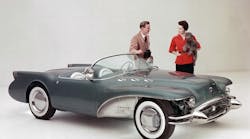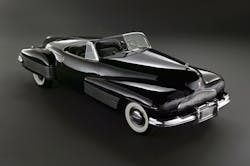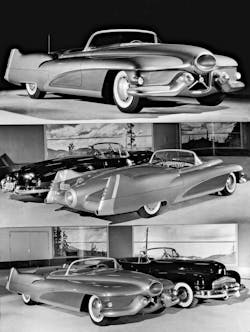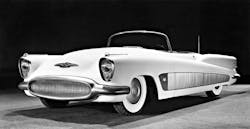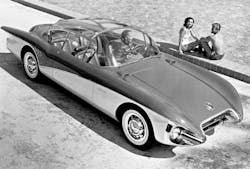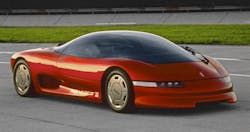Concept vehicles have long been a good idea for both car companies and consumers. They let carmakers show off new engineering tricks and technologies, as well as potential style and color trends without committing to actually manufacturing the car, truck, SUV, or whatever. At the same time, they give car buyers a peek at what auto engineers are capable of and the styles and designs those engineers believe are trending.
Some of the best concept cars I can recall stem from GM’s Buick Div. They were nothing if not forward-looking. The person responsible for many of them was Harley Earl, VP of Styling at GM for many years (1927-1958). In fact, Earl is credited with introducing the idea of concept vehicles and using it as a tool for designers and a clever marketing ploy.
Here’s a look at some of Buick’s classic concept cars.
The two-seat 1938 Y-Job is said to be the world’s first concept car. It was powered by a 141 hp 320 in3 engine and “borrowed” some of its styling cues from Chrysler’s Airflow, such as the flush seams, lack of running boards, and a smooth, aerodynamic surface. Contributing to the smooth look were the hidden power-operated convertible top, flush door handles, and a pop-out decklid handle. It also featured power doors and windows, concealed headlights, and a restrained use of chrome.
Car shows at the time did not feature concept cars, so Earl used the Y-Job as his personal car and brought a lot of attention to it. It was also a time when “experimental” cars carried an X designation. Just to be different, Earl went with a Y instead.
The 1951 LeSabre took its styling and engineering cues from military jets of the day. Its name, for example came from the Air Force’s Sabre jet fighters. From a technical standpoint, it carried a 12-V electrical system (when most cars had 6-V systems), a chrome-molybdenum frame, built-in hydraulic jacks, and a rain-activated convertible roof that would put the top up if it started raining while the driver was away from the car. The automatic transmission used a torque converter and an oil cooler. The engine was fuel-injected and could use gasoline or alcohol and the car had a fuel tank for each. Up front, the bodywork boasted a faux jet intake, while in back there were tail fins and what looked like a jet exhaust. The car rode on a rubber-based suspension in front and the body consisted of cast magnesium body panels in several places.
Harley Earl traded in his Y-Job and began driving the LeSabre as his personal car.
The 1952 XP-300 shared many of the same mechanical components with the LeSabre, including the 300-hp dual-fueled V8. It was styled more like a low-slung sports car of the day rather than a jet fighter, but it could hit 140 mph. Body panels were heat-treated aluminum, which cut the weight of the car to 3,100 lb. And the body and frame were welded into a single unit.
The 1954 Wildcat had some features in common features with the Corvette, a car which was introduced a year earlier. It was a two-seat sports car with a fiberglass body that had coves behind the front wheels and a back end much like that of the Corvettes of that day. But it had a more powerful engine, a 220-hp, 322 in3 V8 with four side-draft carburetors. It also had cutaway front fenders with flying-wing fenders that exposed part of the front suspension and the entire front wheel. Twin swiveling headlights were mounted on either side of the windshield.
The bright red and white fiberglass body of the 1956 Centurion sported a transparent dome over the four-seat interior. Under the hood, power came from a 325-hp V8, while on top of the hood, twin air scoops pulled in air to cool the passengers. A television camera mounted in the rear of the Centurion would let the driver see traffic behind the car on a dashboard-mounted TV screen.
The 1985 Wildcat highlighted the 3.6-liter 3800 V6 engine popularized by Buick in the 1980s and ‘90s. The 360-hp engine was souped up by racing experts at McLaren Engines and boasted 24 valves, DOHC, and programmable sequential fuel injection. The rear-mounted engine, which sent power to all four wheels, was visible from the outside through an opening in the rear deck. The Wildcat lacked traditional doors. Instead, the rounded canopy was hinged at the rear and tilted up while the steering wheel tilted forward to let the driver in. The body was made of composite carbon fiber and glass. The driver could get information from a screen in the center console that showed torque, g-force, oil pressure, and a compass. Meanwhile, a heads-up display on the glass canopy reported on the car's speed, mileage, and gear selection.
So what was your favorite concept vehicle and why? Got a picture of it you can post?
